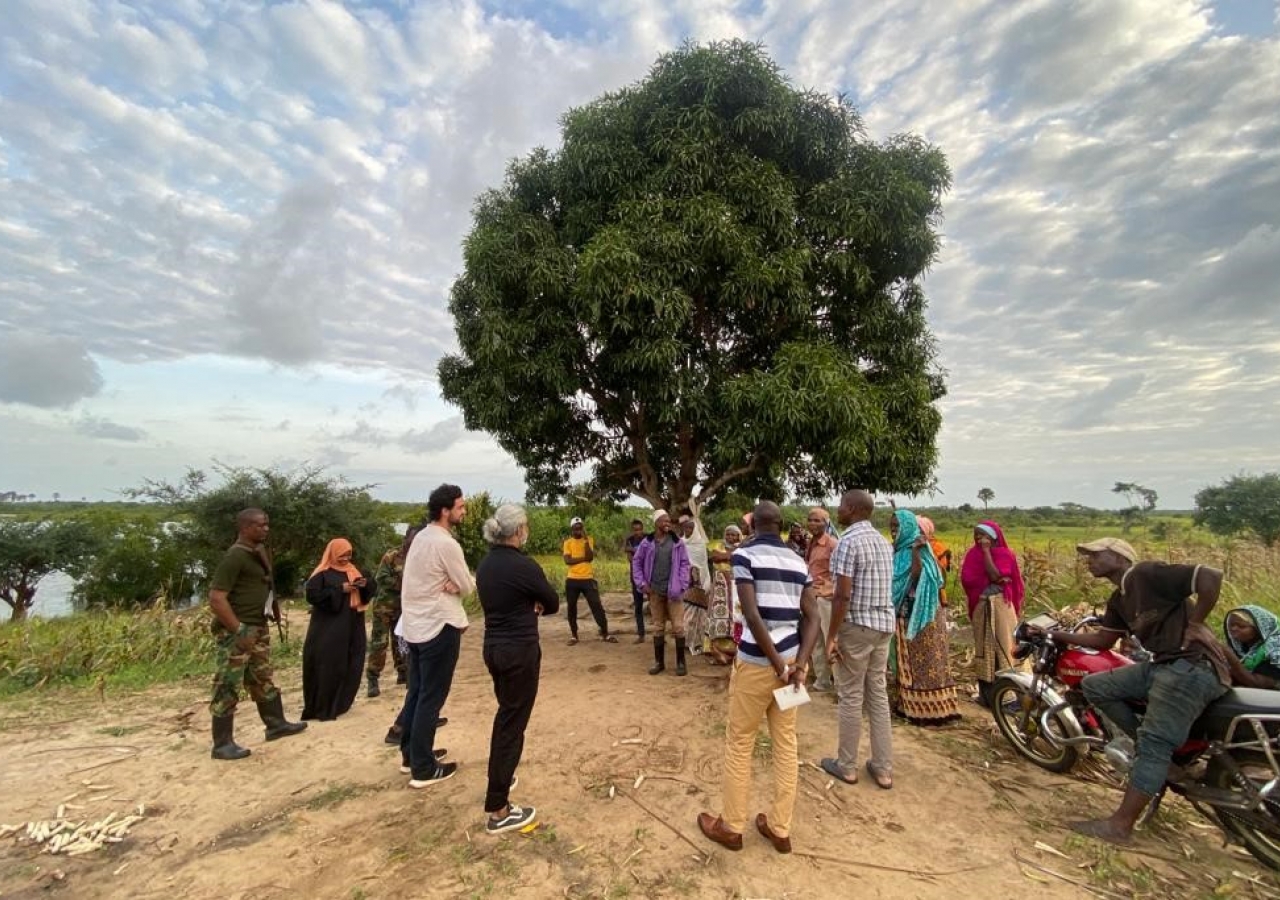The fight against climate change is bidirectional, according to Dr Jamal, who has training and experience in hyperbaric and dive medicine, marine ecology, ecological planning and participatory development. While governments commit to reduce carbon emissions by lowing the use of fossil fuels, key ecosystems that can effectively pull carbon out of the atmosphere are also being restored: a process called carbon sequestration.
“Mangrove forests are highly effective at this,” said Dr Jamal, a Canadian whose family hails from Tanzania. “They can store carbon in their water-logged soils for generations. Mangroves are a group of specialised trees that thrive in the wet soils of the coastline. Restoring them has many other benefits: shoreline protection from wave action and erosion; providing a nursery for juvenile fish, and providing habitat for increased biodiversity; halting saltwater intrusion into groundwater; and regulating freshwater flow as it meets the sea.”
But mangroves do not provide these benefits on their own. They're part of a continuum of coastal ecosystems, including coastal forests, tidal mudflats, seagrass meadows, coral reefs, and the nearshore sea. These ecosystems work in a mutually reinforcing and regenerative manner and together they ensure the cycling of water, oxygen, carbon, and nutrients. In this way, coastal ecosystems support high quality habitat for a diversity of marine and terrestrial species – including humans.
Right now, mangroves are described as “the most critically threatened ecosystem in the world.” The degradation of mangrove forests in Tanzania and Kenya has arisen primarily from human over-use, which happens for many complex reasons. This loss is felt directly by local communities, ultimately impacting their quality of life, and resilience against the local effects of climate change.
Consequently, more and more local communities have voiced their desire to restore mangrove forests – and many communities have already organised to start restoring them. That's why – with climate change and community resilience at the forefront of its agenda – AKF is advancing mangrove conservation and restoration as one of many nature-based solutions to help build resilience to the impacts of climate change in East Africa. These programmes are centred around the community and draw from AKF’s vast experience in human and community development.
As a result of the recent TKN visit to East Africa, Dr Jamal and the AKF team identified key locations and strategies to advance work in mangrove restoration along the coasts of Kenya and Tanzania – better known as the Swahili Coast. Throughout the visit, they found that the issue of mangrove degradation is not just an environmental issue but also a socioeconomic one. With Dr Jamal’s support, AKF is working to design holistic and community-centric programmes that support coastal regeneration with mangroves at the core.
This, however, is no easy task: Mangrove planting projects have an 80 percent failure rate. This is due to a lack of understanding about mangrove ecology and the flow of water in mangrove forests, neglecting to involve and empower local communities, ignoring adjacent ecosystems and their connections to mangrove forests, and a lack of long-term monitoring and adaptive management. All these factors are being accounted for in AKF’s work, leveraging Dr Jamal’s expertise.
Dr Jamal was delighted to find that his enthusiasm for ecological restoration was matched at every encounter. He was also relieved to learn that most of the mangrove forests along the Swahili Coast are healthy – and likely capable of regenerating on their own if the sources of stress can be removed.
“Traversing mangrove forests is no easy task,” Dr Jamal said. “Often the carbonaceous mud is thigh-high! Some days we were donning rubber gumboots or snorkeling gear to assess the forests – and then quickly getting washed up and changed for a government meeting in the afternoon.”
AKF East Africa is immensely grateful to Dr Jamal for his outstanding work and ongoing contribution on a critical ecological restoration project as a TKN volunteer. Having recently returned to Toronto, he is helping remotely to craft the overall vision for AKF’s future work in coastal regeneration with mangroves as an anchor. He is excited to return to the Swahili Coast next year to see how things are progressing.












